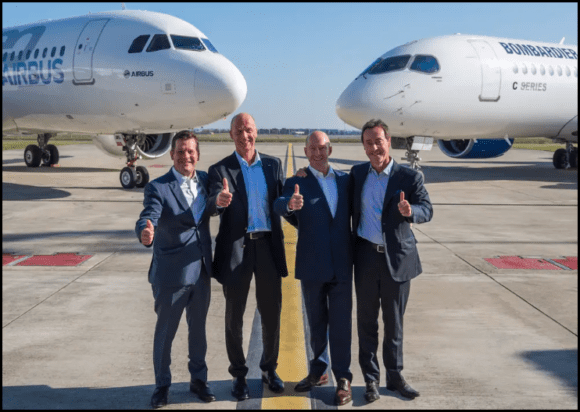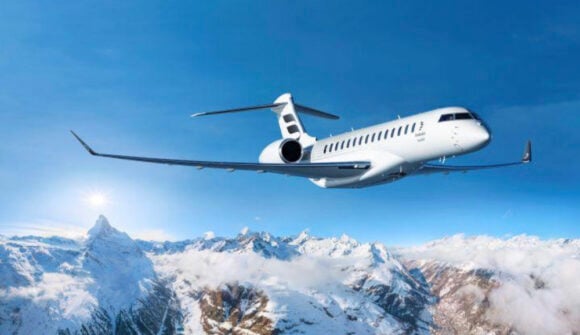The CSeries returned to flying yesterday, September 7th, with FTV2 making a short flight at Mirabel with the modified engines from Pratt & Whitney installed. The flight was routine and uneventful. The photo below from Bombardier shows FTV2 flying yesterday.
Now that the aircraft has resumed test flying, that should provide additional confidence for prospective customers that the program is back on track. Two key questions about the program emerge. First, can Bombardier quickly ramp-up test flying to achieve the 1.6 hours per plane per day needed to conclude the 2,400 hour program by next summer, for second half 2015 entry into service? Second, will the resumption in flying result in additional customers who may have wanted to announce at Farnborough, but were skittish about ordering an airplane that was unable to fly at the time, and the optics it may have had with shareholders and financing sources?
Most of the orders signed at Farnborough were LOIs rather than firm orders, which we expect to see firmed up shortly, now that the airplane is back flying. The key will be whether there will be new orders now that the airplane is flying again, particularly with a customer who wants to take one of the early delivery slots now vacated by Malmo. With increasing tension over the Ukraine, the orders with Ilyushin finance and early deliveries could be in jeopardy should sanctions against Russia expand and the political situation continue to deteriorate, something over which Bombardier has no control. But they need customers to step up for those early delivery slots.
We expect the CSeries to meet its initial performance targets, and be more efficient than competitors in both its size classes. But with program delays and concerns over credibility, proving aircraft performance, particularly fuel burn, will be a key input to future aircraft competitions. This is one of the reasons resumption of flight testing and performance validation are so important to Bombardier, as some in the industry will say “show me” before considering the airplane. Fortunately, the engine tests at Pratt & Whitney show the engine will be on-target at EIS, and for the Airbus variant, PW has already announced a 2% additional improvement available from 2019. We would expect similar performance improvements to be available for CSeries as well in the 2020 time frame as well.
The restructured management team at Bombardier has one burden off their shoulders, as the aircraft is flying again. Now the true test will be whether they can take that success, and garner additional orders for the airplane. A new order or two this fall would go a long way to restoring confidence in the program, which despite a strong order book at Farnborough, has taken several hits with the grounding, Malmo’s decision not to be the launch customer, the restructuring, and Bombardier’s financial results. But with the airplane flying again, there is once again light at the end of the tunnel in Montreal.
Views: 18




What the CSeries program needs is a significant firm order from a well-established, first-tier american or european carrier. Such an order could have a ripple effect.
Its been 6 years since the launch. If they can’t get 300 orders by now after all the spectacular numbers promised by BBD, it won’t get easier. I suppose a lot of shareholders have abandoned while the remainding faithful choose to go down with the ship.
Last time I’ve checked, combined orders for the 319neo and the MAX7 stood at a stellar 100. In my view, there are two ways to interpret this. Either there is no market for planes in the 100-130 seats segment. Or airlines are waiting to see the CSeries’ tests results to make up their mind as to which airplane to order in that segment. I believe the latter to be the proper explanation. Point in case: Air Canada’s decision to firm orders for MAX8 and MAX9 and only fill options for the MAX7.